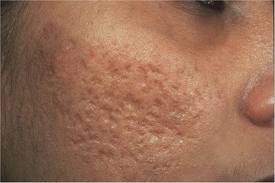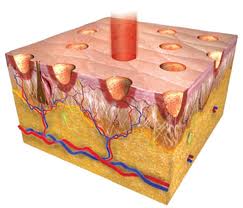While many methods for skin rejuvenation have been developed, few such methods are helpful for acne scars. The typical skin treatments of microdermabrasion, chemical peels, intense pulsed light and even ablative CO2 laser resurfacing do not produce substantative improvements in the unique contour problems caused by acne. Traditional CO2 laser resurfacing is the best of the bunch but results are often left wanting. The most effectve treatment is dermabrasion but it carries with it risks of hypopigmentation and even hypertrophic scarring.


Fractional laser resurfacing has been shown in numerous studies to be very effective for atrophic acne scars. Delivered in a punctuate pattern, the epidermis and a part of the dermis is vaporized. At the same time, collagen contraction occurs by its heating effect causing skin tightening. This skin tightening effect is thought to be very beneficial for acne scars. Multiple fractional laser treatments will be needed and they should be spaced about a month apart to allow for complete epithelial regeneration. Histologic and electron microscopic studies have shown the regeneration of elastic-like fibers with fractional treatments, a sign of dermal remodeling.
The fractional laser allows for different parameters to be set including power, pulse width, and dot pitch being the distance between each laser point. It is not clear as to the optimal setting for any individual patient and consideration has to be given to the patient’s concern for recovery. Given the challenge of atrophic acne scars, deeper depths of penetration up to 350 microns are best used.
Dr. Barry Eppley
Indianapolis, Indiana


